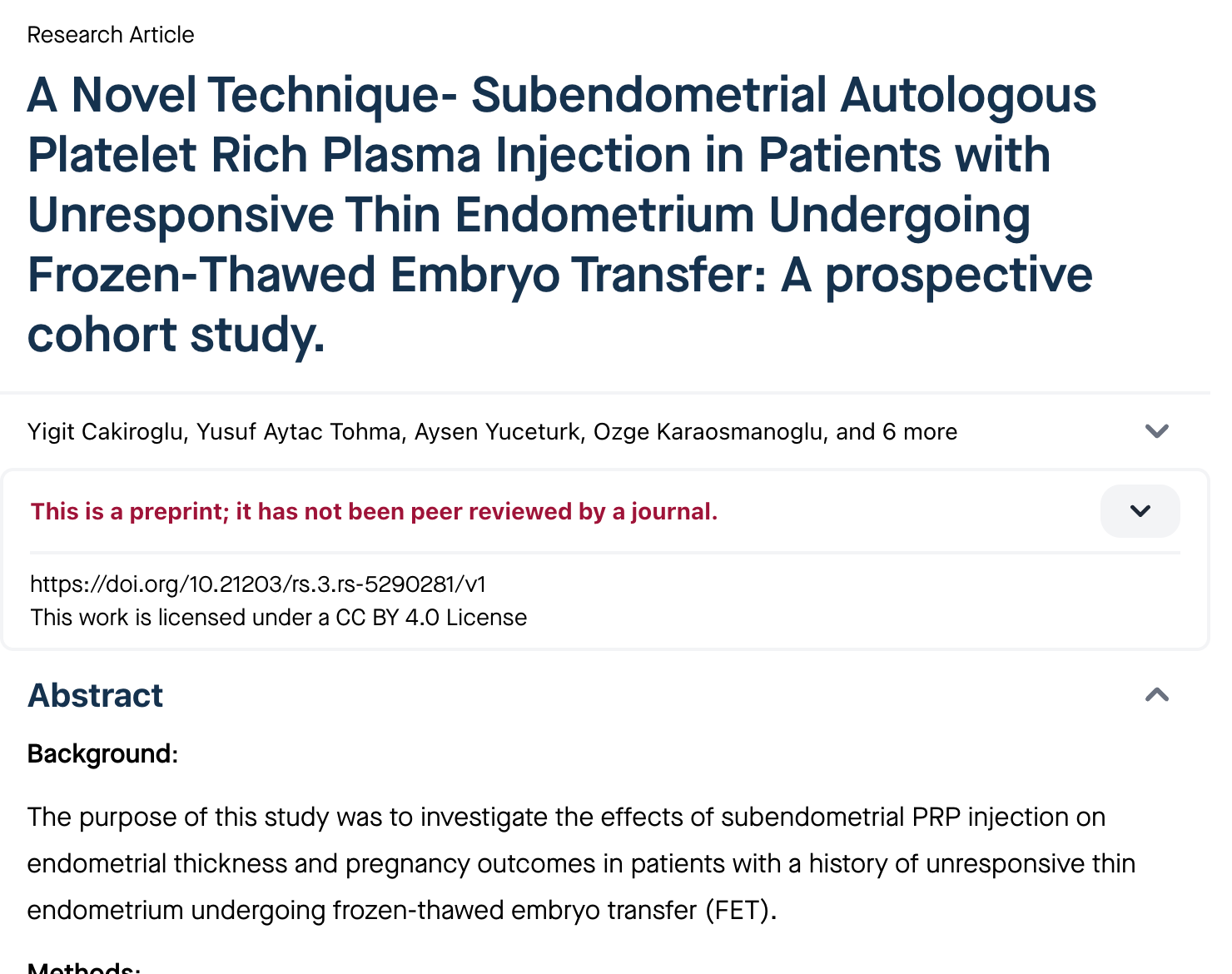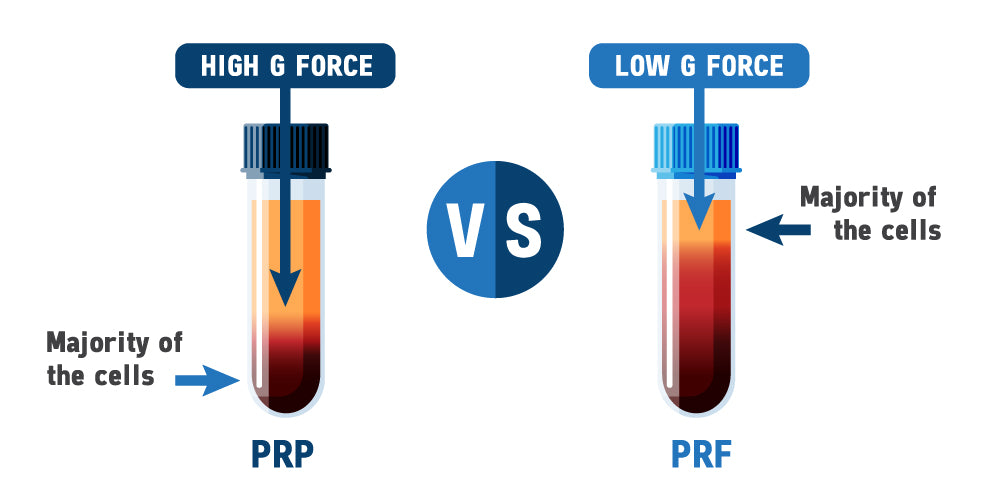Background:
The purpose of this study was to investigate the effects of subendometrial PRP injection on endometrial thickness and pregnancy outcomes in patients with a history of unresponsive thin endometrium undergoing frozen-thawed embryo transfer (FET).
Methods:
This prospective cohort study was conducted at a Acibadem Mehmet Ali Aydinlar University-Istanbul, Turkey. Women with a history of suboptimal endometrial proliferation (< 7 mm) were offered to participate in the study. Those who accepted subendometrial PRP injection formed Group 1 (n = 100); those who did not accept PRP injection formed the control group (Group 2; n = 100). Autologous PRP was prepared by centrifugation from peripheral blood and was injected transvaginally into the subendometrial region under ultrasound guidance within 10 days of the cessation of the menstruation. On the 2-4th days of the second menstrual cycle after the PRP procedure, hormonal treatment was initiated with 14 days of oral estradiol supplementation. Embryo transfer was scheduled for women who were found to have adequate endometrial thickness after the initiation of progesterone. Pregnancy (positive serum hCG) and livebirth rates were followed.
A total of 200 women (age 36.4 ± 5.8) were included in the study. PRP treatment resulted in higher endometrial thickness compared to the control group (7.7 ± 1.9 mm vs 6.1 ± 1.2 mm; p < 0.01). In the PRP group, 3 women (3.0%) conceived spontaneously and 97 (97.0%) attempted FET; in the control group there were no spontaneous pregnancies. In the PRP group, 33/97 women (34.0% of total) could not undergo ET due to persistent unresponsive thin endometrium or fluid in the endometrial cavity, compared to 75/100 (75% of total) in controls (p < 0.001). Positive serum hCG test was significantly higher in the PRP group compared to the control group (25.8% vs 9.0%; p = 0.002). Clinical pregnancy rate was also higher in the PRP group (22.7% vs. 7.0%; p = 0.002). Live birth rate was significantly higher in the PRP group compared to the controls (17.5% vs. 2.0%; p < 0.001).
In women with a history of suboptimal endometrial development, subendometrial PRP injection was associated with improved endometrial thickness and livebirth rate.
Click here to read the full text
Note: T-Lab™ System Users receive full access to all studies (in PDF) via their HCP Portal.







